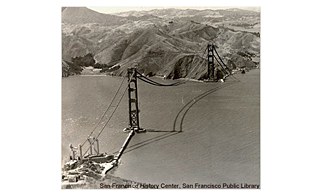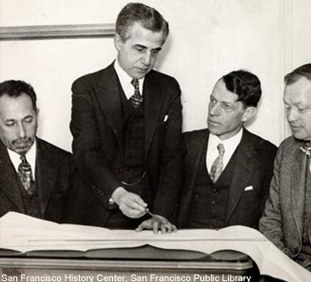Golden Gate Bridge / Joseph Baermann Strauss
German Roots in SF


After more than four years of construction, at a cost of $35 million, the bridge was completed and inaugurated by President Franklin D. Roosevelt in 1937. Due to its red colour, tremendous towers, and swinging cables, the Golden Gate Bridge was soon established as a worldwide icon of San Francisco. For more than two decades it remained the longest bridge in the world. Only one year after it’s completion, engineer Joseph B. Strauss died at the age of 68.
Even today the Golden Gate Bridge is an important transportation link. It provides six lanes and can be crossed by car, foot or bicycle. It is visited by roughly nine million people annually.
Golden Gate Bridge